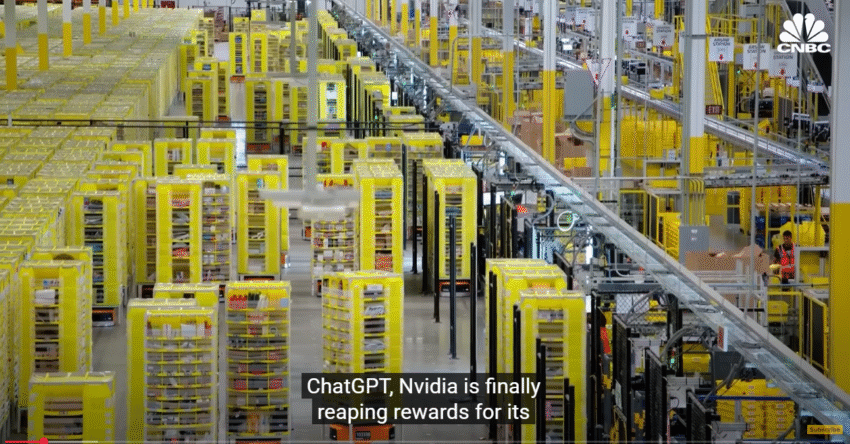Here’s a clear breakdown of how Nvidia evolved from a gaming hardware company into the AI powerhouse behind tools like ChatGPT — a transformation that reshaped the tech industry:
💻🎮 How Nvidia Grew From Gaming to AI Giant, Now Powering ChatGPT
🧩 Humble Beginnings in Gaming (1993–2010s)
- Founded in 1993, Nvidia originally focused on graphics processing units (GPUs) for gaming.
- Its breakthrough came in 1999 with the launch of the GeForce 256, the first GPU labeled a “graphics processing unit.”
- Gamers and game developers loved Nvidia’s ability to render high-quality 3D graphics, making it a dominant name in the PC gaming industry.
🚀 The Turning Point: GPUs for More Than Games
- Around the mid-2000s, researchers discovered that Nvidia’s GPUs—originally designed for rendering graphics—were also extremely efficient at parallel processing.
- This capability made them perfect for training machine learning and AI models, which require vast amounts of matrix math and computation.
Fun fact: Nvidia’s CUDA programming platform (launched in 2006) let developers use GPUs for general-purpose computing—paving the way for AI innovation.
🤖 AI Boom & Strategic Vision (2010s–Present)
- Nvidia shifted its strategy from just gaming to data centers, deep learning, and AI.
- It invested heavily in:
- GPU acceleration for AI workloads
- Data center infrastructure
- Partnerships with cloud providers and AI startups
- It became the go-to hardware provider for training large-scale AI models, including OpenAI’s GPT models, Google’s AI systems, and more.
🧠 Powering ChatGPT and the AI Race
- Models like GPT-3 and GPT-4, used in ChatGPT, are trained on Nvidia GPUs—specifically the A100 and newer H100 chips.
- These GPUs are optimized for massive-scale machine learning tasks, enabling models to understand and generate human-like language.
Nvidia chips are the backbone of modern generative AI, from chatbots to image generation tools like DALL·E and Midjourney.
💰 Nvidia’s AI Gold Rush
- As of 2024–2025, Nvidia became a trillion-dollar company, driven by the surging demand for AI infrastructure.
- Their chips are in short supply, and companies across the globe—from Meta to Microsoft—are racing to get them.
- Nvidia now earns more revenue from AI and data center applications than from gaming.
📈 Key Milestones in the Journey
| Year | Milestone |
|---|---|
| 1999 | Launch of GeForce 256 GPU |
| 2006 | Introduction of CUDA (GPU for general computing) |
| 2012 | Deep learning boom starts with AlexNet on Nvidia GPUs |
| 2020s | A100 and H100 GPUs become standard for AI models |
| 2023 | Market value surges past $1 trillion |
| 2024+ | Nvidia becomes the foundation of the global AI boom |
🔮 The Future of Nvidia
- Launching newer, more powerful chips like the Blackwell B100.
- Developing entire AI computing ecosystems, including software stacks.
- Eyeing expansion into robotics, autonomous vehicles, and healthcare AI.
🎯 Final Takeaway
Nvidia’s transformation wasn’t accidental—it was the result of foresight, innovation, and betting big on AI at just the right time. From powering your favorite video games to running the intelligence behind ChatGPT, Nvidia is now the engine of the AI revolution.
Would you like this as a short video script, infographic, or slide deck?
